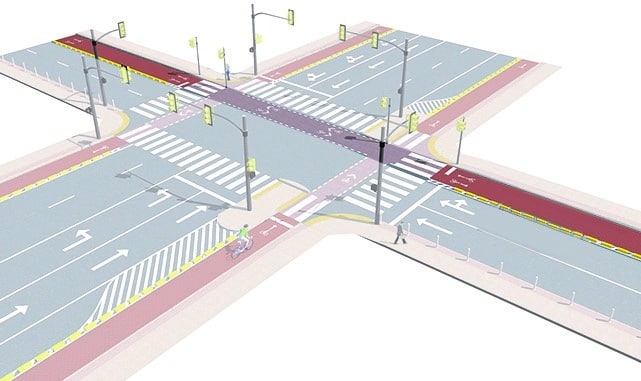Two-way bike lanes allow cycle movement in both directions, on one side of the road. Two-way lanes share some of the same design characteristics as one-way lanes, but may require additional considerations at driveway and side-street crossings. A two-way may be configured as a protected cycle track – at street level with a parking lane or other barrier – or as a raised cycle track to provide vertical separation from the adjacent motor vehicle lane.
Bi-directional protected bike lanes are best suited for streets with long segments without access points, or where it is difficult for cyclists to cross the street. These include: one-way streets, parks, waterfront roads, wide boulevards and generally streets with fewer interruptions.
Bi-directional protected bike lanes have a standard minimum width of 2.5 meters, allowing for overtaking and riders in both directions.

References
NACTO, Urban Bikeway Design Guide
Schepers et al. Road factors and bicycle—motor vehicle crashes at unsignalized priority intersections. Accident Analysis & Prevention. Volume 43, Issue 2, 2011.